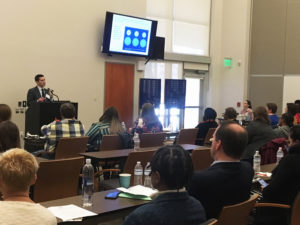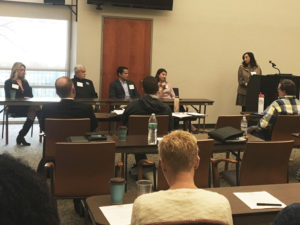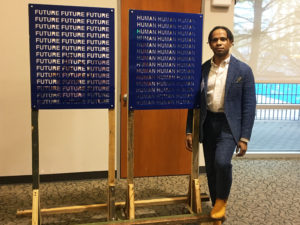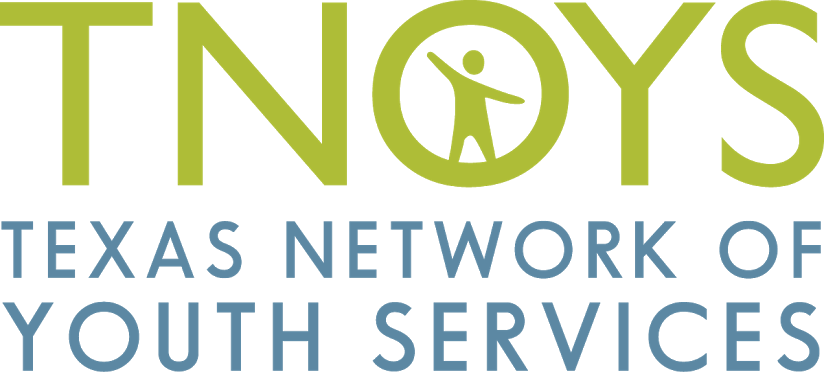 Last week, TNOYS convened stakeholders working to protect youth during natural disasters. Cross-systems collaboration is important to us at TNOYS, and this event was a unique opportunity for experts in emergency response, child welfare, disaster relief, and others to discuss best practices and build relationships.
Last week, TNOYS convened stakeholders working to protect youth during natural disasters. Cross-systems collaboration is important to us at TNOYS, and this event was a unique opportunity for experts in emergency response, child welfare, disaster relief, and others to discuss best practices and build relationships.
Texas unfortunately leads the nation in natural disasters, with one such event occurring every eight months on average. Children, youth, and families can face instability and displacement after a natural disaster, leading to a higher risk of exploitation and trauma. This event explored how stakeholders can collaborate before, during, and after a natural disaster to ensure that youth needs are met.
The day kicked off with presentations by Heidi Penix, Program Director of the Children’s Justice Act, and Jay Hall, Assistant Chief of the Texas Division of Emergency Management. Heidi noted that there is limited data on what happens to children and youth during and after a natural disaster, and more needs to be done to make shelters child-focused. Jay made the important point that “all disasters are local,” and encouraged the group to “make an effort to get to know your local emergency management coordinator, and talk about how your organization can help during or after a disaster.”
Following the presentations, attendees listened to panel discussions that covered disaster response, addressing youth vulnerabilities and trauma, and building community resilience.
Highlights included:
 While discussing disaster response, Jessica Debalski from American Red Cross Southwest noted the importance of training volunteers to identify missing and exploited children. Edwin Lyons, an Emergency Management Specialist at FEMA, echoed this sentiment and mentioned that standardizing identity tracking could greatly benefit first responders.
While discussing disaster response, Jessica Debalski from American Red Cross Southwest noted the importance of training volunteers to identify missing and exploited children. Edwin Lyons, an Emergency Management Specialist at FEMA, echoed this sentiment and mentioned that standardizing identity tracking could greatly benefit first responders.
- Panelists then discussed how their organizations can address youth vulnerabilities and trauma after a natural disaster. Leemie Kahng-Sofer highlighted important resources organized by the National Center for Missing and Exploited Children, such as the National Emergency Child Locator Hotline and the Unaccompanied Minors Registry.
- Several panelists mentioned the need to train educators to support youth experiencing disaster-related trauma. An important takeaway was the need to integrate mental health services with school partners, so that educators and school staff have the tools they need to support youth in the long term.
- During the panel on building community resilience, Neeraj Aggarwal from the Rebuild Texas Fund (RTF) shared that he was impressed by the ability of the faith-based community to mobilize and sustain momentum, noting that this community is integral to relief efforts. He also talked about RTF-funded initiatives after Hurricane Harvey, highlighting Mental Health First Aid training as the most valuable.
- Juliet Stipeche, Director of Education at the Houston Mayor’s Office, noted how emergencies expose our weaknesses, and that building relationships and community can improve equity. Juliet explained that a key lesson from Hurricane Harvey was that “Houston needs to be guided first and foremost by the needs of the most vulnerable”.
 Attendees then broke for lunch and networking. In the afternoon, the group reconvened for an interactive presentation led by artist Michael Stevenson, who encouraged attendees to reflect on the impact of natural disasters on current and future generations. Michael explained that while it’s important to meet the basic needs of youth, attendees can also play a role in elevating youth voices and keeping their hope and imagination alive.
Attendees then broke for lunch and networking. In the afternoon, the group reconvened for an interactive presentation led by artist Michael Stevenson, who encouraged attendees to reflect on the impact of natural disasters on current and future generations. Michael explained that while it’s important to meet the basic needs of youth, attendees can also play a role in elevating youth voices and keeping their hope and imagination alive.
The day’s final presenter was Todd Latiolais from the Office of the Governor Child Sex Trafficking Team, who spoke about the important work of that office to train first responders and the public to identify trafficking. Unfortunately trafficking is known to spike after a natural disaster, and it’s important that all stakeholders have the appropriate training to identify it.
For the event’s final activity, participants separated into two breakout discussions on improving disaster response training and collaboration among stakeholders. The groups came back with several key takeaways:
- Training materials need to be more accessible for all stakeholders. Many helpful training materials already exist, and a database is needed to organize them.
- Collaboration should occur at every stage of disaster preparedness and relief. Every system in the state works within its own region, and they do not necessarily align with others. As a result, there are a lot of knowledge gaps when working across systems.
- It would be helpful to establish ‘points of contact’ for specific issues (such as youth safety, family issues, etc.) within communities and disaster response coalitions. These stakeholders could answer questions and mobilize trainings.
TNOYS Next Steps: Building Resources to Keep Youth Safe.
Monday’s event is only the first step in a larger project to support youth during natural disasters.
As the event wrapped up, TNOYS Program Manager Ann-Charlotte Proffitt announced our next steps on this issue: In 2020 we plan to identify and develop resources to help organizations protect youth before, during, and after natural disasters. Using conversations at the convening as a starting point, we will work in collaboration with stakeholders to identify and develop recommendations, policies, protocols, training content, and resources. We will then partner with member organizations to deliver these trainings and resources.
We were energized by the variety of experts who came together at last week’s event. We’re excited to continue the work of serving organizations that work with youth survivors of natural disasters, and we look forward to sharing more details!
